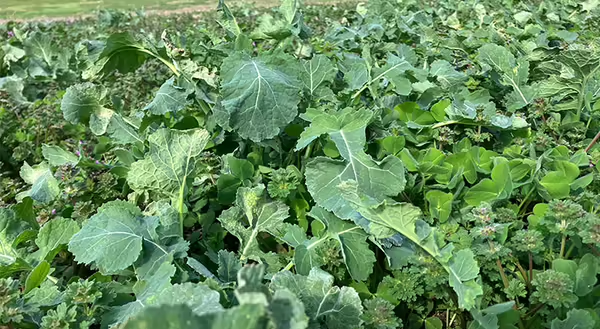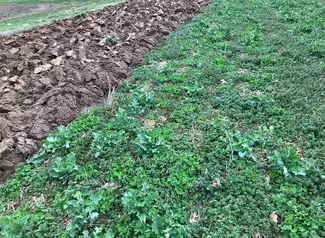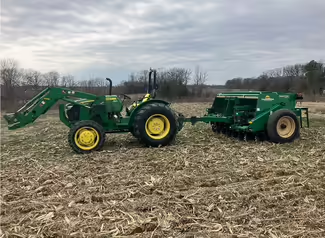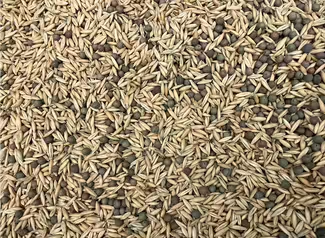
Fall Cover Crop Mixtures
With spring weather pushing growth, our cover crops are also taking off as well. I had some early fall planted spring oats, crimson clover, and rapeseed (25/6/2 lb/A, respectively) in a few areas including some planted after potato harvest last year. The oats winter killed as expected, however, the rapeseed and crimson clover have about 8-10 inches of growth now. This area is rotated with potatoes and cover crops; half the area was just plowed for planting with the cover remaining for the season on the other side. I will probably interseed some other cover crops as this mixture starts to peak for some extended cover over the season.
Spring Cover Crop Experimenting
I took advantage of the good soil conditions to do a little spring cover crop “experimenting”. Sometimes you don’t get a chance to seed fall covers in every area you really want. This year I have about an acre at our local demonstration farm, the Baebler Educational Farm, south of Waterloo which will be planted into multiple planting dates of field and sweet corn for a youth ag camp. I no-till drilled spring oats and Austrian winter peas (target 50/20 lb/A, respectively) on March 5. Given a good population of henbit and other winter annuals (minimal marestail), I sprayed the area March 7 with a burndown of glyphosate. This would not be a must, but since these winter annual weeds were established, I have seen them suppress a young cover crop when the weeds have a head start advantage. I did have one block that I did not spray which I had interseeded some ‘Fixation’ balansa clover late, last September, into some standing corn. The clover isn’t super thick, but I did want to see how it would grow and work with the spring cover I drilled into it.
The goal with this cover is to help suppress weeds and benefit the soil for the subsequent no-till corn to come this season. Cover crop in the area with the first planting date (hopefully mid-April) will not have a lot of time to grow, however, the remaining majority of the field will have more than 2 months or longer to grow. This area has lots of waterhemp pressure and hopefully this will prevent having to take extra weed management steps before those later planting dates. Stay tuned for updates next month on progress!
Want to try something like this? Check out the Midwest Cover Crops Council Selector Tool to get some inspiration on some cover crops that might thrive in your area planted this spring and early summer.
Management Thoughts for the Month
Think about any covers you have or have planted and how to use them best. Either way think about soil moisture when considering termination. An actively growing cover crop will pull moisture from the soil... use this to your advantage. If it’s wet, then let it grow some. If it’s getting big and things are dry, maybe you should terminate to prevent it from pulling too much moisture. The key to termination timing is far more complex than just this, however, keep this concept in mind.
Many of our covers will be incorporated with tillage for many specialty crop systems. For many, termination may have happened or will be this month. Just keep in mind the amount of residue and the limitations of your tillage equipment. Consider an herbicide application at least 2 weeks before incorporation or mowing to help make the biomass easy to incorporate. There is nothing worse than making a first tillage pass just to feel the residue is not incorporating like you want it too. Rather than beating it with more and more tillage, one of the two options I mentioned before can reduce that stress!
Think now about how you might add some cover crops after some of the early season crops you are planting now!


